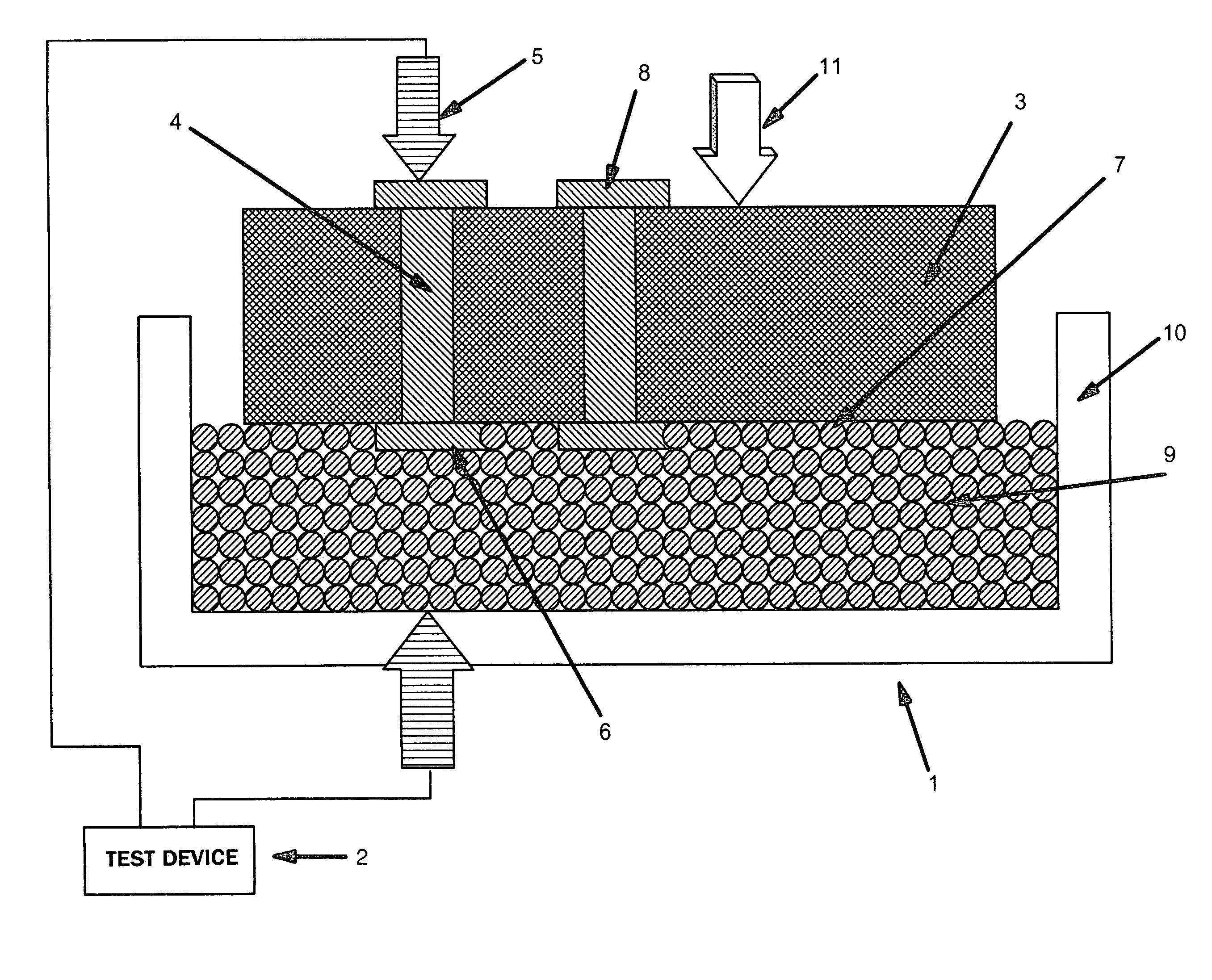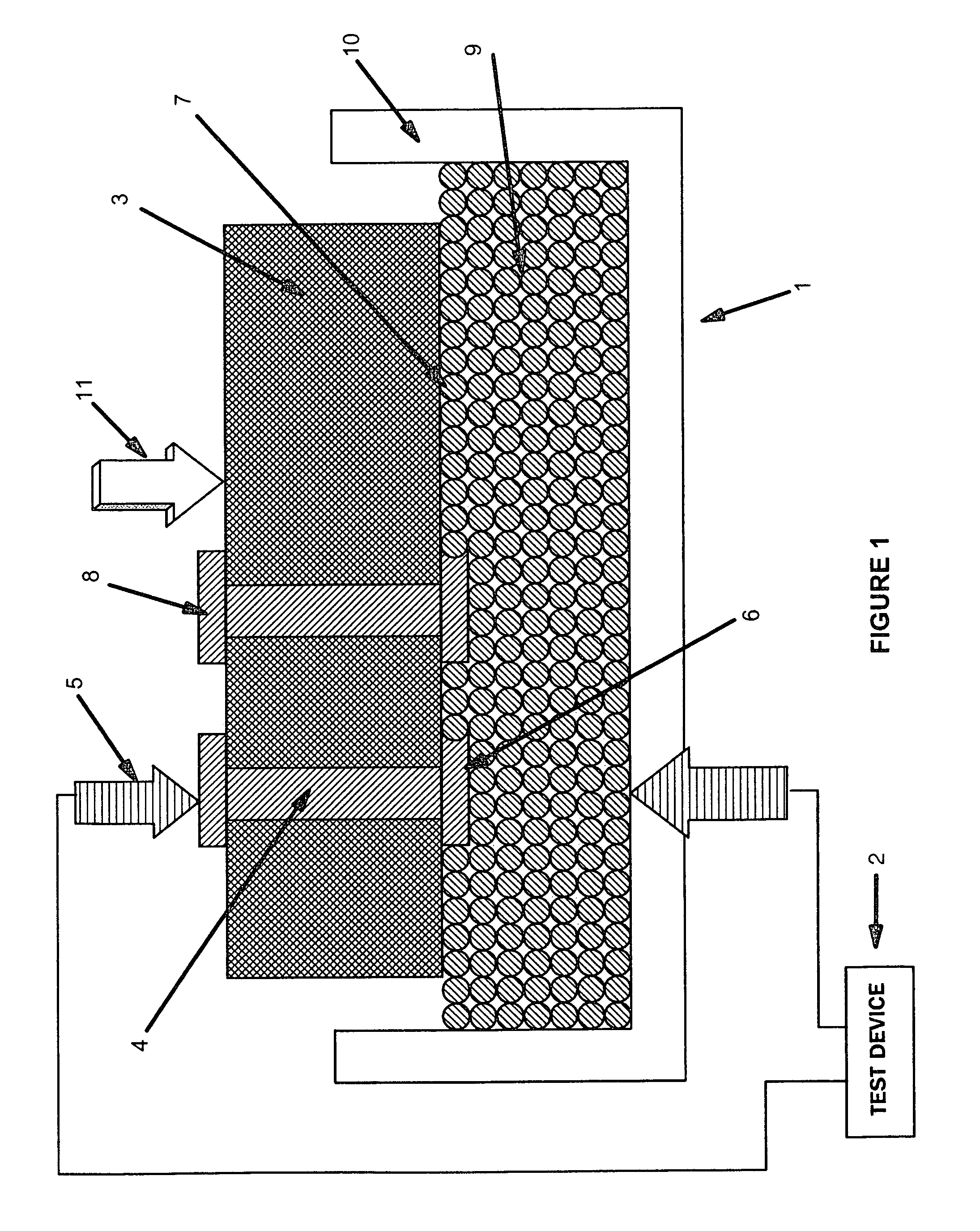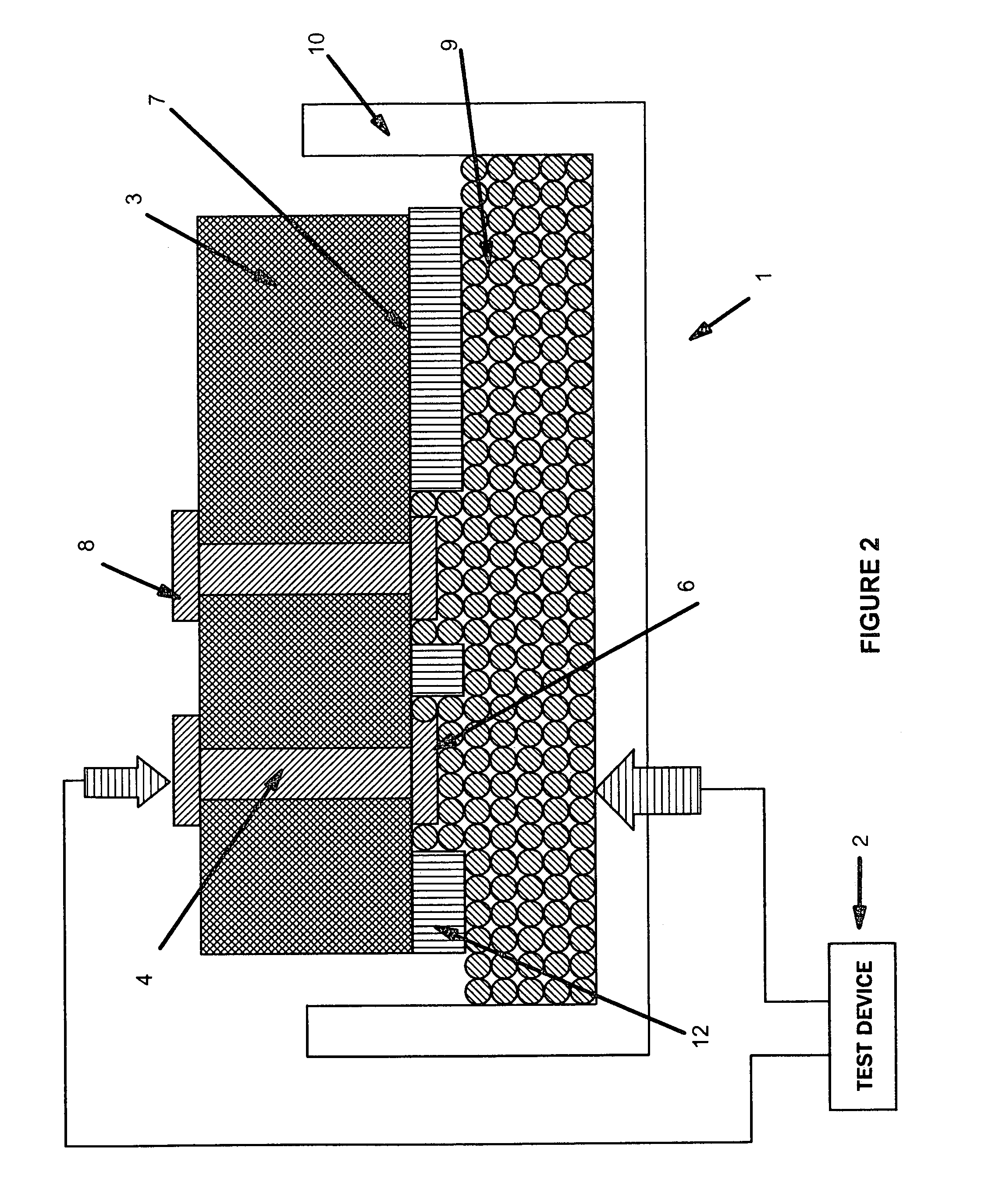Method and apparatus for electrical commoning of circuits
a technology of electrical commoning and circuit, applied in the direction of printed circuit testing, measurement instrument housing, instruments, etc., can solve the problems of electrical circuits that are not suitable for contact with contact pads, electrical commoning mechanisms that are not functional, and “false open”, so as to reduce manufacturing waste and reduce customer complaints
- Summary
- Abstract
- Description
- Claims
- Application Information
AI Technical Summary
Benefits of technology
Problems solved by technology
Method used
Image
Examples
Embodiment Construction
[0028]The term “electrically commoning” of contact pads or electronic circuits as used in this disclosure has the same meaning as electrically shorting of pads or circuits, as is well known in the art.
[0029]An overview of aspects and advantages of the subject invention to effect the described electrical commoning of circuitry and to carry out electrical testing of circuitry while eliminating known problems of the prior art, will first be described followed by a more detailed description with reference to the drawings.
[0030]The disclosed invention incorporates the use of small electrically conductive particles, preferably but not limited to spheres, placed in a receptacle so as to somewhat limit the horizontal spreading of the particles. A suitable quantity of the particles for the container or receptacle can be determined to ensure that the surface of a substrate containing a group of electrical contacts or pads to be shorted will always come into contact with a minimum concentratio...
PUM
 Login to View More
Login to View More Abstract
Description
Claims
Application Information
 Login to View More
Login to View More - R&D
- Intellectual Property
- Life Sciences
- Materials
- Tech Scout
- Unparalleled Data Quality
- Higher Quality Content
- 60% Fewer Hallucinations
Browse by: Latest US Patents, China's latest patents, Technical Efficacy Thesaurus, Application Domain, Technology Topic, Popular Technical Reports.
© 2025 PatSnap. All rights reserved.Legal|Privacy policy|Modern Slavery Act Transparency Statement|Sitemap|About US| Contact US: help@patsnap.com



